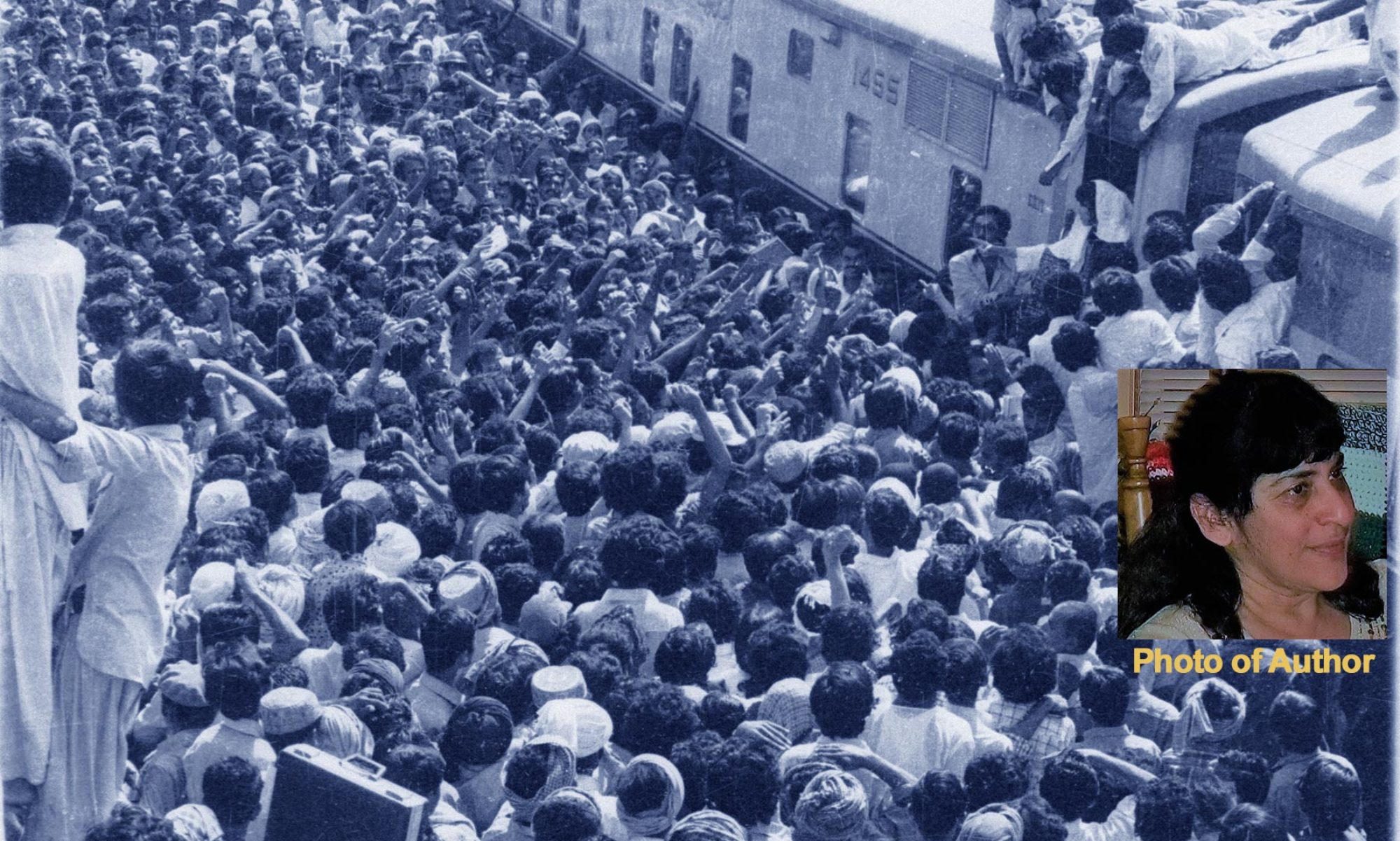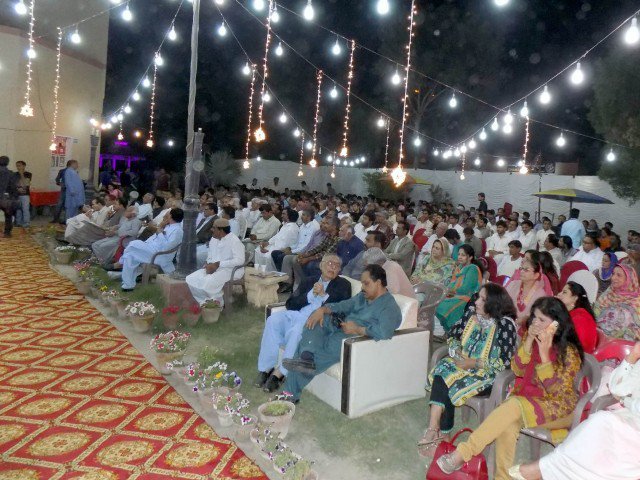50 years ago, 4th March, 1967 marked a watershed event in the post-Partition history of Sindh. It was the day when 207 students were arrested en masse at the G.M. Barrage between Jamshoro and Hyderabad as they staged a rally against the One Unit scheme that had been in place in the country since 1955.
The protests were a culmination of the unrest among Sindhi students that had been simmering beneath the surface for a long time against One Unit. Its causes went deep into the humiliations suffered by Sindh and its people on cultural, political, administrative and economic levels.
Sindhi, a 2,500 year-old language, had no official status in what became the province of West Pakistan. It was stripped of all its rights as a medium of instruction, except in primary schools in the rural areas of Sindh. Sindhis were thus deprived of all opportunities of promoting their culture and language.
Politically and administratively, One Unit meant that Sindh disappeared as an entity and was reduced to looking to the capital Lahore for the pettiest matters.
________________________________________
On the economic level – and this situation continues to this day – it had to concede much of the lands rendered cultivable by the construction of barrages to the higher bureaucracy and military.
________________________________________
Last but not the least, the demographic changes due to Partition, which saw mass influx of Muslim migrants from India and an outflow of Sindhi Hindus, meant that the major cities of the province, including Karachi, became virtual no-go areas for Sindhis as far as jobs and economic opportunities were concerned.
Final straw
The movement itself was sparked when the Vice Chancellor of Sindh University, Hasan Ali Abdur Rehman, was dismissed in February 1967 by the Governor of West Pakistan, Nawab Amir Mohammad Khan Kalabagh.
Rehman, the first Sindhi Vice Chancellor of the university, was dismissed for his efforts for facilitating the admission of Sindhi students in professional colleges by allotting quotas for the far-flung districts of Sindh. The students agitated and demanded Rehman to be reinstated.
On March 4, a general-body meeting of students of Sindh University, Liaquat Medical College, and Engineering College was planned in Sindh University’s City Campus in Hyderabad. Students were proceeding to the venue in university buses when the police encircled them near the G.M. Barrage. The students were beaten up and all 207 of them were arrested.
The police brutality resulted in mass protests all over the province. Although the dismissal order against the Vice Chancellor was not taken back, this moment, which came to be known as the 4th March Movement and is commemorated every year, gave rise to wide-scale political awakening in Sindh.
My contribution
I was a first-year student at the university’s Hyderabad campus. I remember it was another pleasant evening when the news of the mass arrest spread.
This development was grave not only because students had been targeted, but because the authorities had been trying to divide the students on linguistic basis. In order to counter the unrest against the dismissal of the Vice Chancellor, the Commissioner of Hyderabad, Masroor Ahsan, had attempted to rally those who were regarded as leaders of Urdu-speaking students behind him.
________________________________________
The outrage felt by the students against the victimisation of the first Sindhi Vice Chancellor of Sindh University, who had dared resist the attempts by the West Pakistan government to undermine the autonomy of the university, was given a parochial colour.
________________________________________
Given that most Urdu-speaking students seemed to be supportive of government action, a few of us decided that something had to be done, even symbolically, to prevent the cleavage between the students on parochial lines. This could only be done by showing solidarity with the arrested students. A minimum would be to write slogans on walls against the police action.
So me and my comrade Inayat Kashmiri took up a brush to paint slogans against the police and the Ayub dictatorship in the area around Tilak Charri, where most of the education institutions of Hyderabad were located at the time.
While writing on the walls, we had our eyes fixed on the on-coming traffic on the one-way road, ready to slip into the side streets if a police van came. We were too naïve to know that police in this country does not observe basic traffic rules.
A police van came full-speed from the opposite direction and before we could do anything, we received the full brunt of lathis on our backs, were lifted up and thrown inside the van. Direction: Market Thana. There ensued salvos of invectives in Punjabi centred on one’s lower anatomy.
We were handcuffed and remained tied between two chairs in the SHO’s office for four days and nights. This made of us far greater rebels than the books we had lately become fond of: Maxim Gorky’s Mother and, of course, the Communist Manifesto.
Market Thana was located just near the red light area of Chakla. A large part of police activity in this thana consisted of rounding up prostitutes from the bazaar and bringing them in for extortion and entertainment.
________________________________________
The language of communication in the thana was Punjabi – not its Heer of Waris Shah variant but an outpouring of its filthiest variety. This made us understand all the more the resentment in Sindh against One Unit, the suppression of the smaller provinces and their merger into West Pakistan with its capital in Lahore.
________________________________________
During this time, we were hardly given any food and we avoided drinking water as we did not want to beg our unworldly hosts to take us to toilet. After four days, Hafeez Qureshi, one of the leading advocates of Hyderabad and a nationalist leader, came looking for us. He asked the SHO for a copy of the FIR so that he could engage legal procedures for our release. But an FIR there was none.
Apparently the SHO hadn’t even cared to inform his higher authorities of our arrest. He panicked and handed us over to the lawyer and even excused himself, saying that if he knew we were students, he would have let us go after admonition. Luckily for us, it was not yet the era of missing persons and kill and dump.
The discovery of Sindh
This small act of solidarity earned us lot of recognition and friends in the university. I already knew Jam Saqi, the great Sindhi nationalist leader whom I held in awe for his dedication and selflessness. He came from a far-off village in Tharparkar. I was a frequent visitor to his small kholi in a building on Tilak Charri.
He used to cook his only meal of the day late in the evening on a small stove. Even then, he used to insist on sharing it with me. I had never come across such a man in my family environment. I realised that life was much deeper and vaster than what family confines could offer. The real human beings were found where I was taught not to look for inspiration.
4th March served me as initiation into the soul of the province that had offered refuge to thousands of Urdu-speaking families like mine when they migrated to this country after Partition. With time, on becoming proficient in Sindhi language and going to the various cities and rural areas of Sindh as an activist, I impregnated myself with the deeply humanistic substrate of the Sindhi civilisation. With Jam Saqi, I came to meet luminaries like Hyder Bakhsh Jatoi, Ibrahim Joyo, Sobho Gianchandani, Usman Diplai and others.
What struck me the most in these people was their simplicity and total absence of pretension of any kind. I became more and more repulsed by the type of hostility that the great majority of educated Urdu-speakers maintained against the people of Sindh at the time.
The importance of 4th March
It will not be wrong to say that 4th March crystallised the defiance of the people of Sindh against the treatment meted out to them by the dominant players of the country. Ground was prepared for it first of all by an unprecedented flourishing of Sindhi literature in all of its genres, especially poetry. Poets like Shaikh Ayaz felt and mirrored the pain of Sindh in their poetry.
No wonder that after 4th March, a recurrent event Sindhi Sham became the main form of assertion of Sindhi identity and pride. Behind an innocuous cultural façade, Sindhi Sham was a forum for voicing dissent against the unjust policies perpetrated in the name of one nation.
Countless literary periodicals burgeoned in Sindh after 4th March. To this day, the most vibrant daily press of the country, closest to the ordinary citizens, is the Sindhi press.
Unfortunately, most historians and political specialists in and outside Pakistani, with some honourable exceptions like Dr Tanvir Ahmed who wrote the Political Dynamics of Sindh, have failed to take due account of the landmark nature of the 4th March Movement.
________________________________________
The Movement was an important component of the overall democratic upsurge in Pakistan that led to the falling of Ayub Khan’s dictatorship and dismemberment of One Unit. Even the books written on student movements in Pakistan seem to overlook the fact that Sindh, after having been wiped out from the country’s map by virtue of One Unit, struck back hard and reentered the political frame due to the defiance and courage of its students.
________________________________________
It is 50 years since that fateful evening of 4th March, 1967. It is long ago but so near that it is impossible to forget it. Time has not erased the deep pride I have always felt in making a very small contribution to that great event.
I will finish with a prayer by the inimitable Latif Sain:
سائينم سدائين ڪرين مٿي سنڌ سڪار
دوست مٺا دلدار، عالم سڀ آباد ڪرين
Saim sadaein karein mathan Sindh Sukar
Dost mitha dildaar Aalam subh aabad karein
My Lord keep Sindh always on top
Dear Friend also make prosperous the entire world
________________________________________



